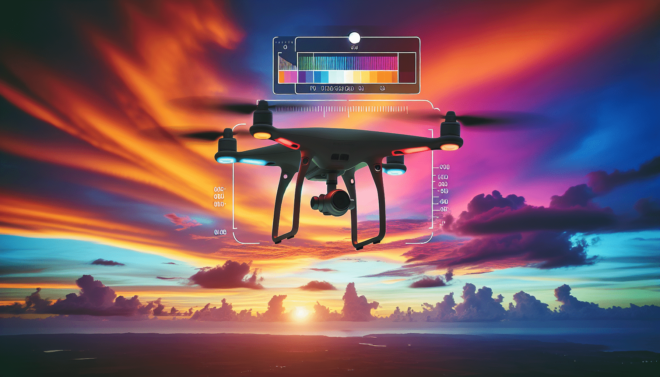Understanding White Balance in Drone Photography
When taking photos with your drone, one important aspect to consider is white balance. White balance refers to the temperature and color of light in a photo, which can greatly affect the overall look and feel of your images. But how exactly do you adjust white balance in drone photos? Let’s break it down for you.
What is White Balance?
White balance determines how colors appear in an image by adjusting them to appear natural under different lighting conditions. It helps eliminate any unwanted color casts and ensures that whites appear white in your photos. Understanding white balance is crucial for achieving accurate and true-to-life colors in your drone photography.
Importance of Correct White Balance
Having the correct white balance in your drone photos can make a significant difference in the overall quality of your images. It can help enhance the mood and atmosphere of your photos, as well as highlight the true colors of the scene you are capturing. Incorrect white balance can result in photos looking too warm (orange/yellow) or too cool (blue) and can detract from the visual impact of your images.
Adjusting White Balance in Drone Photos
Now that you understand the importance of white balance, let’s dive into how you can adjust it in your drone photos.
Pre-Flight Settings
Before taking off, ensure that your drone’s white balance settings are correctly configured. Most drones offer automatic white balance settings, where the camera adjusts the white balance based on the lighting conditions. However, for more control over your white balance, consider using the manual white balance settings on your drone.
Manual White Balance Settings
To adjust white balance manually on your drone, follow these steps:
- Access your drone’s camera settings.
- Look for the white balance option in the settings menu.
- Choose the appropriate white balance setting based on the lighting conditions (e.g., daylight, cloudy, tungsten, fluorescent).
- Adjust the white balance until the colors appear natural and balanced in your live preview feed.
- Capture test shots to ensure that the white balance is set correctly before proceeding with your photo shoot.
Post-Processing White Balance
If you are not satisfied with the white balance settings in-camera, you can always adjust the white balance during post-processing. Programs like Adobe Lightroom offer powerful white balance tools that allow you to fine-tune the colors in your drone photos. Experiment with different white balance settings until you achieve the desired look and feel in your images.
Common White Balance Issues in Drone Photography
Despite your best efforts, you may encounter common white balance issues when shooting with your drone. Let’s discuss some of these issues and how you can address them.
Blue Color Cast
A common issue in drone photography is a blue color cast, which can occur when shooting in overcast or shadowy conditions. To correct a blue color cast:
- Increase the white balance temperature to add warmth to your images.
- Adjust the tint sliders to eliminate any remaining blue hues in your photos.
- Fine-tune the white balance settings until the colors appear natural and balanced.
Yellow/Orange Color Cast
On the other hand, you may encounter a yellow or orange color cast in your drone photos when shooting under artificial lighting or during sunset. To correct a yellow/orange color cast:
- Decrease the white balance temperature to cool down the colors in your images.
- Adjust the tint sliders to remove any yellow or orange hues.
- Experiment with different white balance settings to achieve the desired color balance in your photos.
Mixed Lighting Conditions
When shooting in environments with mixed lighting conditions, such as a sunset with artificial lighting, you may face challenges in achieving accurate white balance. To address mixed lighting conditions:
- Identify the primary light source in your scene.
- Adjust the white balance settings to match the color temperature of the primary light source.
- Use a combination of manual white balance settings and post-processing tools to balance out the different light sources in your photos.
Advanced White Balance Techniques for Drone Photography
For more advanced users looking to elevate their drone photography, consider these techniques for adjusting white balance in your photos.
Custom White Balance Presets
Create custom white balance presets on your drone for specific shooting conditions, such as golden hour, blue hour, or indoor lighting. By saving custom white balance presets, you can quickly switch between settings without having to manually adjust the white balance each time.
Gray Card Calibration
For precise white balance adjustments, use a gray card during your drone photo shoots. Capture a reference photo of the gray card under the same lighting conditions as your subject, and use the gray card to set a custom white balance in-camera or during post-processing. This method ensures accurate color reproduction in your drone photos.
Final Thoughts
Adjusting white balance in your drone photos is an essential skill to master for capturing vibrant and true-to-life images. By understanding the fundamentals of white balance, using manual settings, and experimenting with post-processing tools, you can enhance the visual impact of your drone photography. Remember to practice adjusting white balance in various lighting conditions to develop your eye for color and achieve stunning results in your drone photos. Happy flying and shooting!

